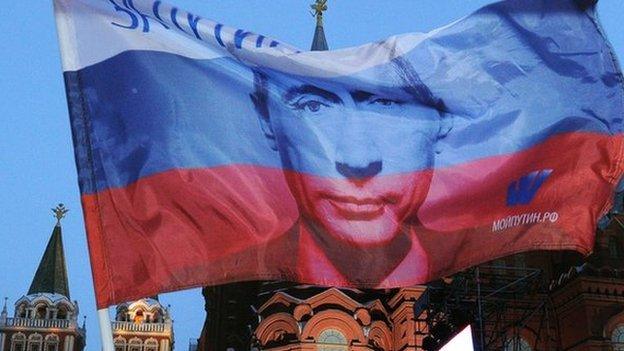Huge Russian warship fascinates French in Saint-Nazaire
- Published
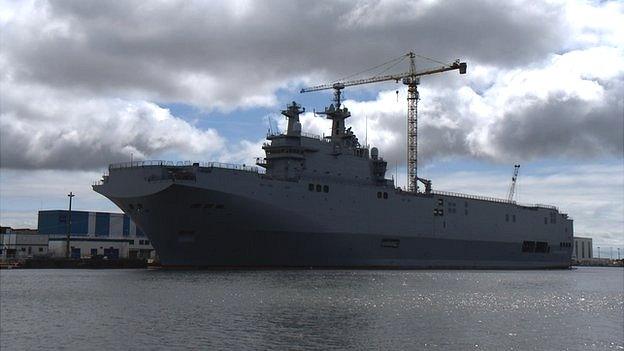
Half of the Vladivostok was assembled in Russia, then towed to France
The evening attraction in Saint-Nazaire this summer is watching Russian sailors practise their marching drill along the quayside.
Some 400 Russian ratings are living in the western French port, awaiting delivery of their controversial new command-and-control ship, the Vladivostok.
By day the sailors receive instruction at an on-shore facility run by the Vladivostok's builders, STX France.
This week they have finally been allowed on board the vessel for the first time.
At the end of the afternoon they return to the Russian navy ship which serves as their sleeping-quarters.
The Russian navy flag - a blue Saint Andrew's cross on a white field, like an inverted Scottish saltire - flies from the stern.
There then follows half an hour of drill, commanders barking out orders as files of sailors parade along the dock. After that they mooch about and play football.
Towering presence
From behind a fence, locals come to stare. The atmosphere is friendly enough - at one point an officer comes over to give a Russian navy badge to a child watching with his parents.
But otherwise there is no contact. No-one here speaks Russian, and the Russians are under strict orders to stay tight-lipped.
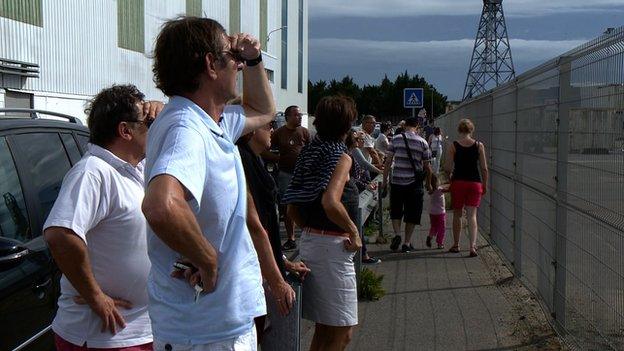
The Russian ship has sparked much curiosity among locals
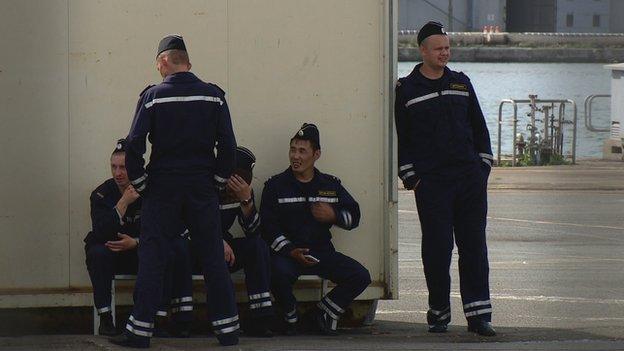
The sailors spend much of the day on a Russian dormitory ship
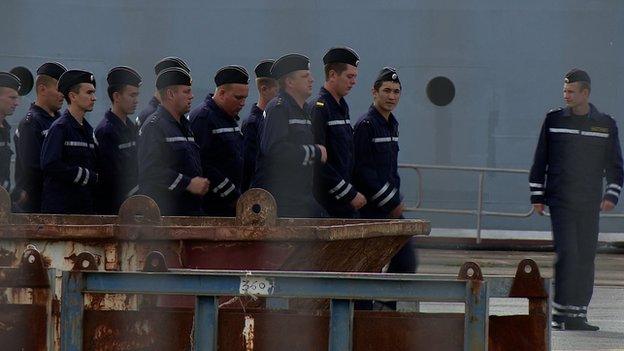
No French leave for these sailors - it's navy drill as usual
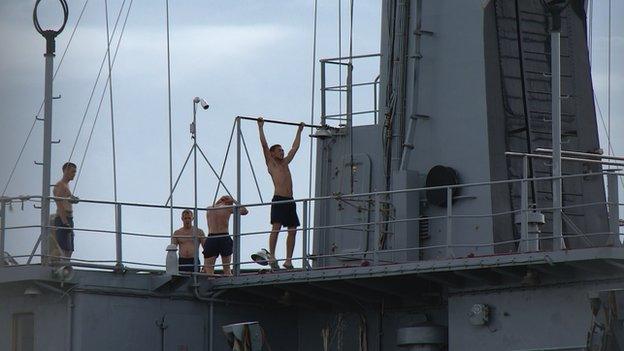
The sailors have some exercise equipment on the dormitory ship
A mass of gray steel, its superstructure looming over the town, the Vladivostok is moored a few hundred metres away.
Workers are applying some final touches, but essentially the Mistral-class helicopter carrier is complete and ready for delivery.
In another part of the dockyard not accessible to the public, work has started on a second ship, the Sevastopol.
As with the Vladivostok, the rear part of the Sevastopol - essentially the container part - was built in Russia. It was then transported by barge to the French naval dockyards at Saint-Nazaire for the all-important front section to be attached.
Political tensions
The French government is now in a quandary over whether to go ahead with delivery of the ships.
On the one hand the warships could greatly enhance the power of President Vladimir Putin's navy. And no-one in France wants that, during the current east-west crisis over Ukraine.
But on the other hand, the contract has been signed. And in Saint-Nazaire hundreds of jobs are at stake.
It is beginning to look very unlikely that President Francois Hollande will stop the sale of the first ship, the Vladivostok. It is paid for - and now the Russians have arrived to take delivery.
The fate of the second ship, the symbolically named Sevastopol, is less sure. President Hollande will keep options open on that sale as long as he can.
Sevastopol has long been the Russian Black Sea Fleet's base in Crimea, a "hero" city associated with Soviet sacrifices in World War Two. But Mr Putin's annexation of the whole Crimean peninsula in March drew international condemnation.
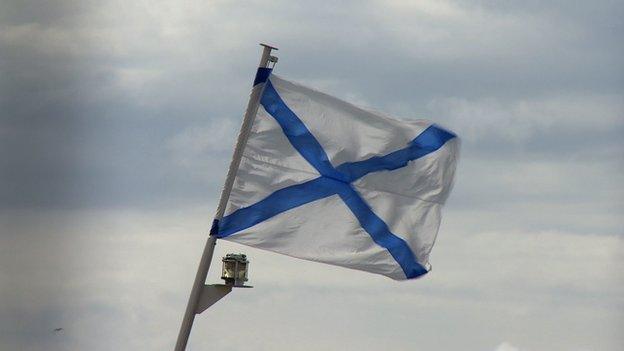
The flag of St Andrew dates back to the imperial Russian navy
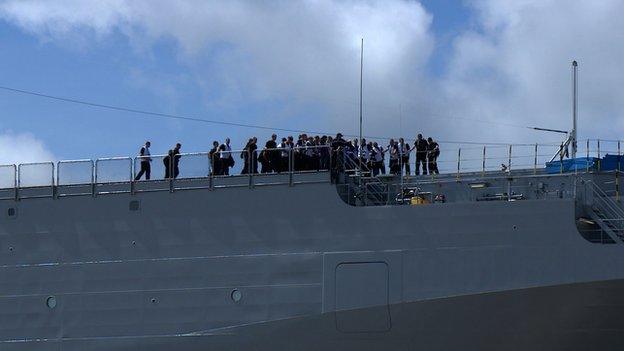
The sailors are finally getting familiar with the Vladivostok before the handover
Designed for Russia
Two problems complicate a proposed alternative plan to sell the ships instead to Nato, or a friendly government.
First, as half of the ships was built in Russia, Russia actually owns part of them already.
Second, the ships are designed for Arctic ports with ice-breaking reinforcement. There is no demand for that kind of ship outside of Russia.
Among the local people watching the Russian sailors, feelings are mixed.
"They're not going to use the ship to fight a war against France," says one woman. "So what's the problem?"
But for Jean-Paul Regent, a retired ship-builder, "It's a terribly difficult decision. We need the jobs and the investment. Building ships is what we do here.
"But for Putin's Russia? The destination makes us feel very uneasy. We are all in two minds about it all."
- Published30 June 2014
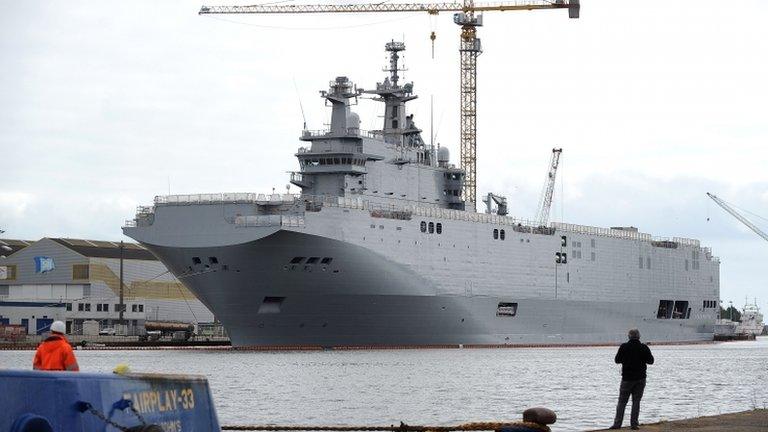
- Published7 August 2014
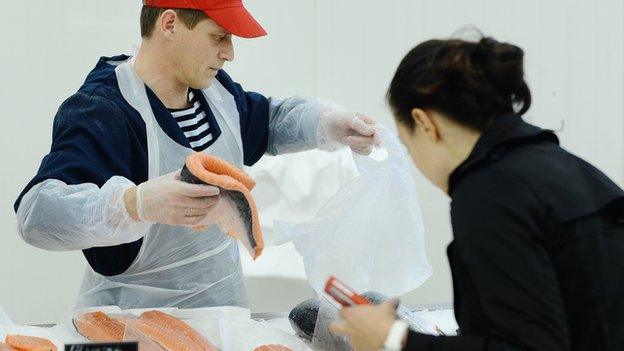
- Published30 July 2014
